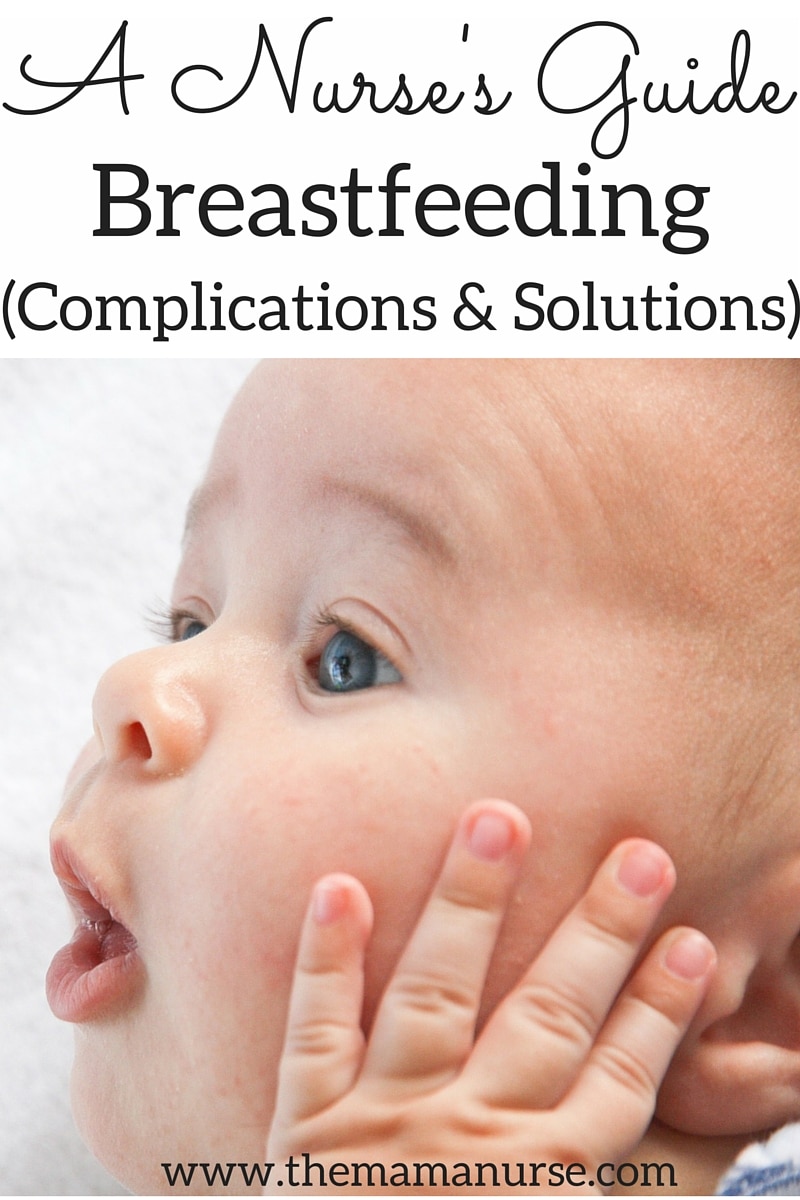It is always a dreaded question that both family and strangers alike feel inclined to ask pregnant women: Are you planning to breastfeed? Societal pressures to breastfeed can cause unneeded stress and learning to do so is difficult enough as it is. If you are planning to breastfeed your baby, knowing the potential complications and solutions beforehand may help you get through troublesome times and allow you to succeed in nursing your baby.
If you are in need of breastfeeding support, you can book in for a private online lactation consultation here.
Nipple Tenderness
Nipple discomfort is very common postpartum because both mom and baby are learning a new skill. This is especially true during the first two weeks. Discomfort if the issue is not corrected can lead to bruising, bleeding and cracking at the nipple site which can place mom and babe at risk of a bacterial or yeast infection. Painful nursing sessions can make mom want to quit nursing altogether which would be such a shame. I would suggest taking Advil and Tylenol together to help with the pain and inflammation. You can also either apply expressed colostrum/breast milk or lanolin cream then air dry as much as possible between feeds to help with the healing process. Wear a comfortable well-fitting bra with nursing pads to keep the area clean and prevent excess rubbing of sore nipples. There are various causes of nipple pain:
- Improper placement of baby: Please see my previous post on breastfeeding techniques and positioning and seek assistance from your healthcare provider or lactation consultant.
- Tongue-tie: Sometimes baby’s tongue will not reach far enough which can cause difficulty latching and nipple discomfort. This is usually caught while in hospital and you may be given the option to have your child’s tongue tie clipped. A frenectomy is a relatively simple procedure that may make all the difference in your breastfeeding experience. If you are at home and are trying to latch with no luck then you can always go in to your health practitioner or lactation consultant and discuss whether this may be the issue.
- Recessed chin: Babies commonly do have recessed chins which makes it easier for them to get through the birth canal. However, some babies have extremely recessed chins that can make it difficult to keep baby latched on properly. When baby is latched, always check baby’s lower lip to see if it is still flanged back like a fish. If it isn’t then use a finger to try to reposition the lower lip while keeping baby on the breast. If that doesn’t work, then remove suction, take baby off and replace baby back on the breast properly. It is very important that baby has a proper latch at all times for the sake of your nipples and your baby’s ability to take in enough milk.
Sleepy Baby
It is very common for a newborn baby to have a long sleep stage after birth and it can be a scary time for new parents. Nursing your baby immediately after birth when they are at their most alert can ensure they have enough energy to get through this stage easier.
Often babies “cluster feed” immediately after birth in preparation of this. If baby wasn’t able to get some good feeds in before nodding off, you made need to wake your sleeping baby to make sure his/her blood sugar levels do not drop too much.
This can be easier said than done! You can help ease baby awake by undressing baby and putting skin to skin with mom, expressing some colostrum and putting it on their lips, and stimulating their back or feet. Sometimes we even have to use a cool cloth.
If your baby is too sleepy and you can’t get them to feed after trying everything, bring them into the hospital right away to be assessed as baby could be at risk of developing jaundice, becoming dehydrated or having a drop in blood sugar.
Engorgement
Your milk generally will come in on day three or four postpartum. If you had an uncomplicated birth you will most likely be home by that time. Engorgement occurs when your body produces more milk than baby needs. Your milk is produced on demand for your baby but it normally takes a few days for your body to adjust. This can leave your breasts feeling very uncomfortable.
Advil and Tylenol, ice packs and cool cabbage leaves can be used to reduce pain and swelling. You can manually express or pump small amounts of breast milk to relieve the pressure. This can help baby latch on if they are having difficulty when your breasts are full. Pumping a bit at the beginning of the feed can prevent baby from becoming overwhelmed with the let down reflex, which can cause them to sputter and pull off.
While experiencing oversupply you should never pump large amounts because it will tell your body to produce more milk, perpetuating engorgement. Engorgement not only affects breastfeeding moms, but also moms that choose not to breastfeed or decide to stop. The same solutions will work. If you have decided to stop nursing, you can reduce the chances of painful engorgement by slowly weaning baby off to allow your body to get used to this change in need for milk production.
Clogged Ducts & Mastitis
A clogged duct can occur if a breast is consistently not emptied causing the milk to get backed up and stuck in the mammary glands. This can happen if the breast is engorged for long periods, baby is taken off the breast before it is emptied or if there are frequent missed feedings. It appears as a hardened ball in one area of the breast that is painful, red and inflamed.
Mastitis is an infection of the breast tissue, which can develop from a clogged duct or cracked/infected nipples. Mastitis involves having a fever and/or chills and having increased redness, pain and swelling in one area of the breast. In severe cases, milk can appear thick and stringy with blood and pus. In these situations it is still safe to breastfeed baby.
Clogged ducts and mastitis are treated the same in that the breasts should be emptied by baby often (every two hours) and then pumped to ensure all milk is completely removed. Before breastfeeding you can massage and use warm compresses to help your milk flow.
If mastitis is not treated immediately and mom becomes very sick, antibiotics may be necessary. There are many antibiotics that are safe to take while breastfeeding. If you have been told to stop breastfeeding due to having to take antibiotics please ask your provider if there are other options as having to stop breastfeeding is not in the best interest for you or baby.
Thrush
This is a yeast infection of the nipple and can be very painful. Thrush of the nipple is common when there has been an injury to the nipple (therefore point of entry for infection) and after a course of antibiotics. Thrush can be passed on to baby when he feeds, and is normally obvious by looking inside baby’s mouth where it will be red and inflamed with white patches that cannot be scratched off.
Baby will most likely appear uncomfortable and will have difficulties feeding. In this case mom and baby will both be prescribed an antifungal medication. Yeast can be very difficult to treat and requires long treatment courses. Using a strict cleansing regimen of breasts and hands, bras, pads etc can help prevent a reintroduction of the infection.
Flat or Inverted Nipples
Depending on the severity, flat or inverted nipples can cause a lot of stress and heartache for a new mom, as baby can have trouble finding the right area of the breast to latch on to. This can lead to baby being unable to latch at all or incorrectly. I would recommend doing anything to help bring your nipple out more. You can try manually stimulating your nipple with your thumb and forefinger back and forth and applying ice for short periods of time right before feeds.
I would also highly recommend pumping for 10 or so minutes beforehand as the suction will help the nipple come out. You can express some milk and leave it at the nipple to help baby know where to latch on to. Breast cups are an option as well. They are much like suction cups that can be applied all throughout pregnancy and also a half hour before feeds to bring your nipples out.
As a last resort you can try nipple shields. I have never had much luck helping moms with them as they are quite cumbersome. They are flexible silicone nipples placed over your breast that baby would attach to. Some babies after use of these find it difficult to go back to breastfeeding without them so it is recommended that they are not overused.
Low Supply
For a healthy mom that is nursing her baby on demand, low supply will not be an issue. As breast milk is produced on demand, decreasing the amount you feed baby and the quality of these feeds can cause low supply. This is especially true during the first six weeks of your infant’s life when your milk supply is still being established.
If you supplement your baby with formula or have to be away from baby, make sure to pump both breasts frequently to maintain your supply. And then you can freeze your breast milk in bags to feed your baby later. Other reasons for decreased supply include dehydration or malnutrition, stress, contraceptives (though there is conflicting evidence that they affect breast milk once supply is well established) and trying to sleep train or put baby on a schedule.
If you notice a drop in your supply after baby has learned to sleep through the night, you could try adding a “dream feed” (feeding baby while they are asleep) or pump before you head to bed. The only real indicator that your milk supply is low is baby not gaining weight or not having enough wet diapers.
In the first week baby should be having at least one pee for each day old ie. four days old, four pees, up to six. After the first week baby should be having six or more odourless, light yellow pees over 24 hours. If you are concerned about baby at all, make sure to take your baby in to be assessed. If you are battling decreased supply, pump in between feeds and feed baby on demand.
As a last resort, physicians may prescribe Domperidone to help with lactation. Fenugreek tablets and Mother’s Milk Tea are natural products that are have not been proven to help but have positive testimonials and are generally harmless if you wish to try them. Always discuss with your health practitioner prior to starting any new medication/herbal remedy.
Breastfeeding is a highly rewarding experience to share with your baby and I recommend that every new mom do her best to become skilled in nursing her baby. The above complications if not dealt with accordingly can get in the way of having a positive breastfeeding experience. Hopefully this information will help you become prepared. Wishing you all the best, Mamas!
Other great breastfeeding resources:
Newman International Breastfeeding Centre
Do you have any breastfeeding tips, tricks or stories to share? Please comment below to help other readers!





0 Comments
Trackbacks/Pingbacks